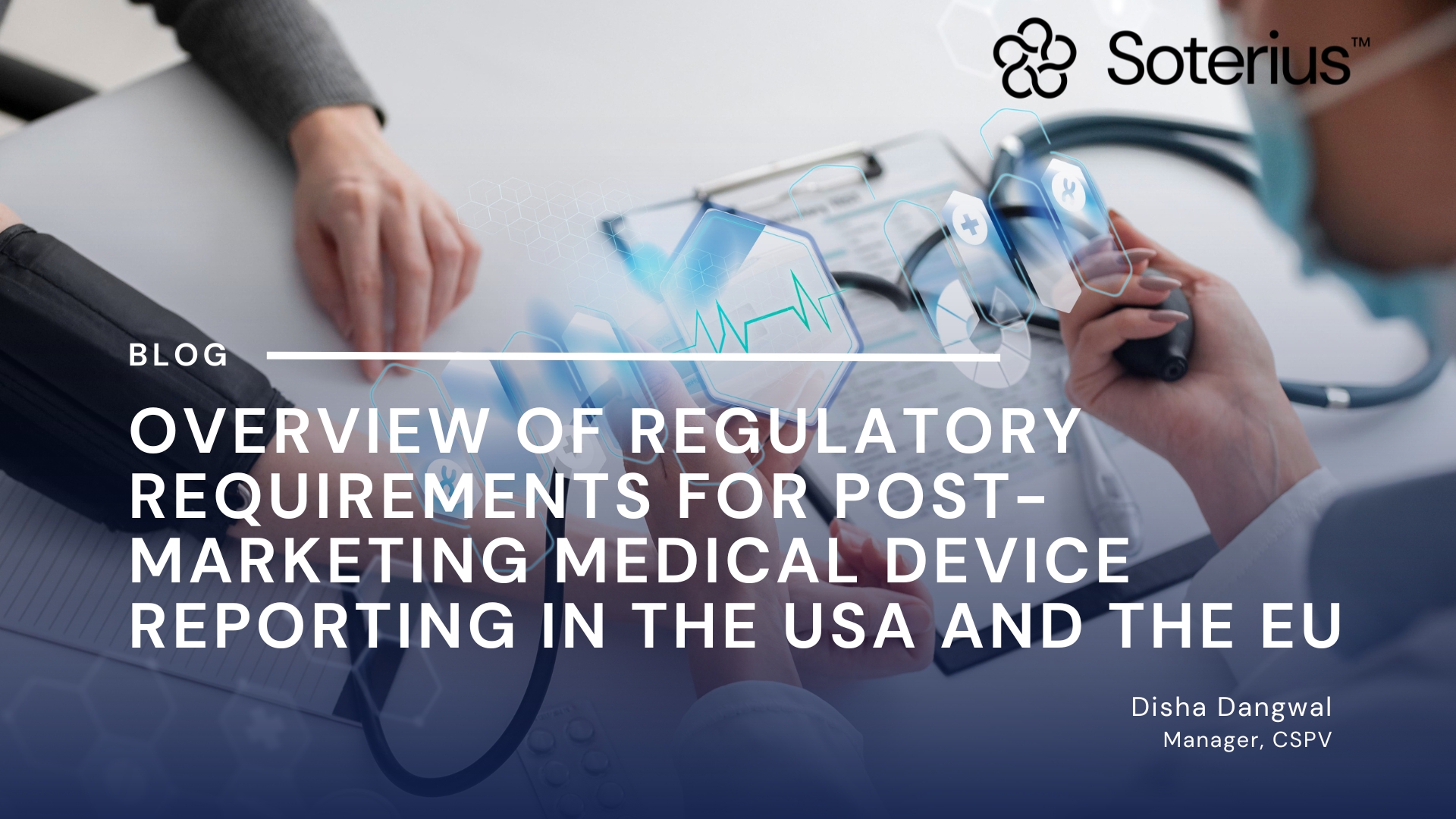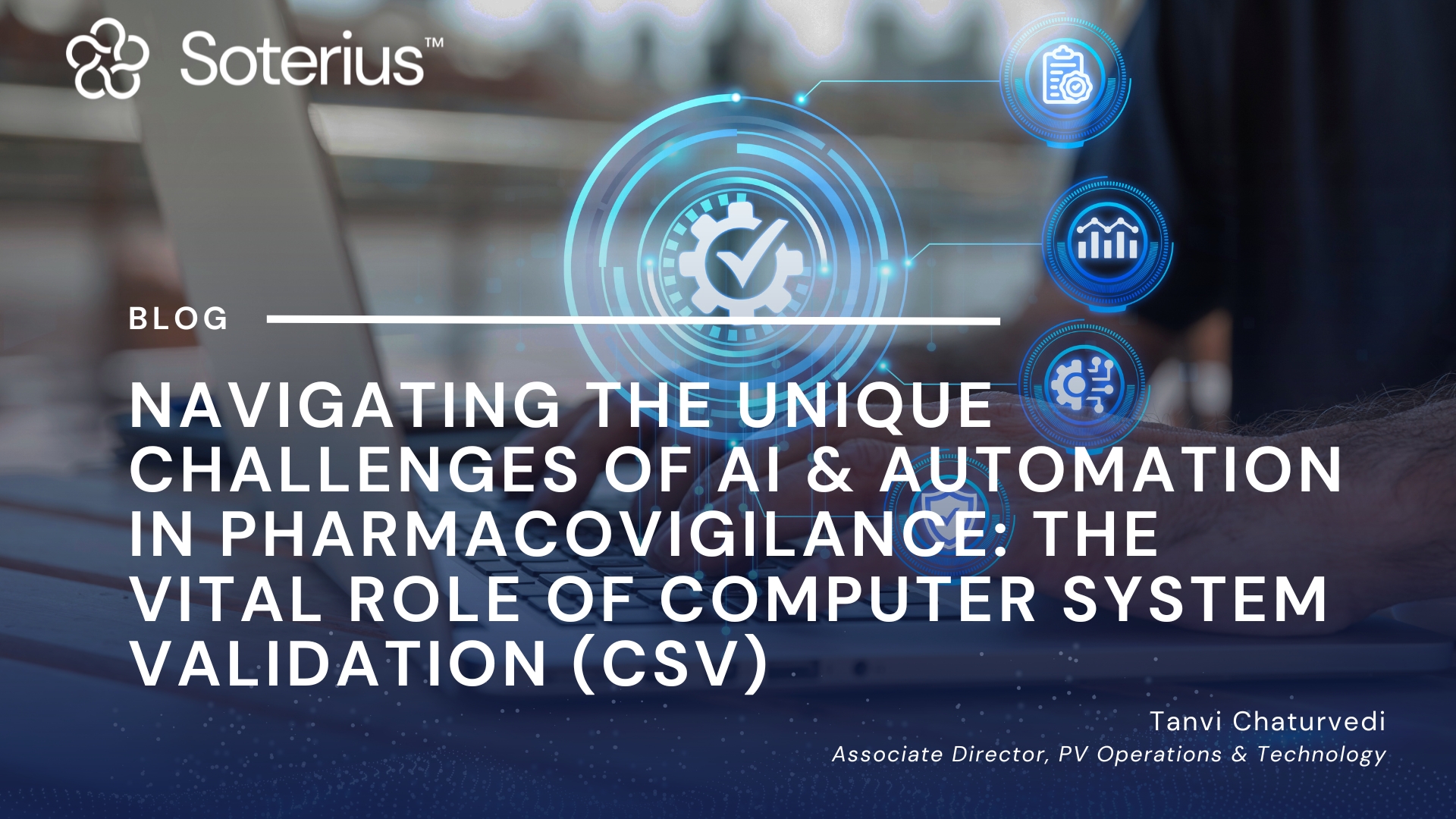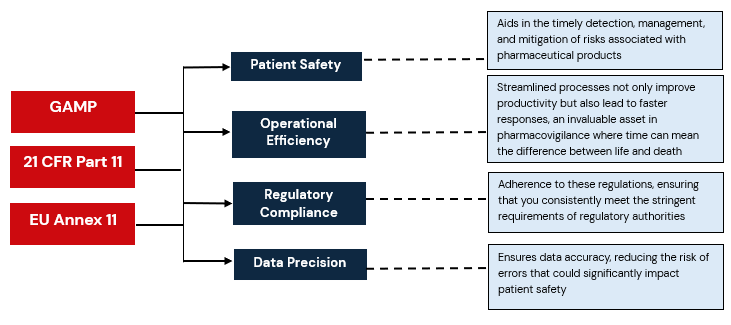Overview of Regulatory Requirement for Post-Marketing Medical Device Reporting in the USA and the EU
Meteriovigilance is the term used in the context of surveillance of medical devices and its purpose is to improve the protection of health and safety of patients, healthcare professionals, and other users by reducing the likelihood of reoccurrence of incidents related to the use of a medical device.
Presented below in brief is the post-marketing regulatory landscape as exist for USFDA and EMA in terms of Medical Device Reporting.
-
Regulations that Govern Medical Device Reporting
- USFDA
- 21 CFR PART 803
- 21 CFR PART 806
- EMA
- Regulation (EU) 2017/745
-
Type of Report and Reporting Timelines
- USFDA
- 5-day report: No later than 5 workdays after becoming aware of a reportable event that requires
- Remedial action to prevent an unreasonable risk substantial harm to the public health.
- A reportable event for which FDA made a written request.
- 30-Day report: No later than 30 calendar days after becoming aware of a reportable death, serious injury, or malfunction
- EMA
- Serious public health threat: Immediately, but not later than
days after the manufacturer becomes aware of that threat.
- Death or an unanticipated serious deterioration in a person’s state of health: Immediately, but not later than 10 days after the date on which the manufacturer becomes aware of the serious incident.
- Other serious incident: Immediately, but no later than 15 days after manufacturer become aware of the incident.
-
Method to submit Reportable Medical Device Reports
- USFDA
- Electronic Submissions Gateway (Web Trader)
- Gateway to Gateway
- EMA
- Submission of Manufacturer’s Incident Report (MIR) form via email to the approving Competent Authority.
- Under development: EUDAMED
-
Requirement for submission of Periodic Report
- USFDA
- Not mentioned*
- Guidance for Combination product has specific requirements; will be detailed in subsequent posting.
- EMA
- Class IIb and class III devices: Annual PSUR Submission
- Class IIa devices: PSUR to be submitted at least every two years
-
Requirement for Trend reporting
- USFDA
- Not mentioned
- EMA
- Manufacturers shall electronically report any statistically significant increase in the frequency or severity of incidents that are not serious incidents or that are expected undesirable side effects that could have a significant impact on the benefit-risk analysis, and which have led or may lead to risks to the health or safety of patients, users or other persons that are unacceptable when weighed against the intended benefits


